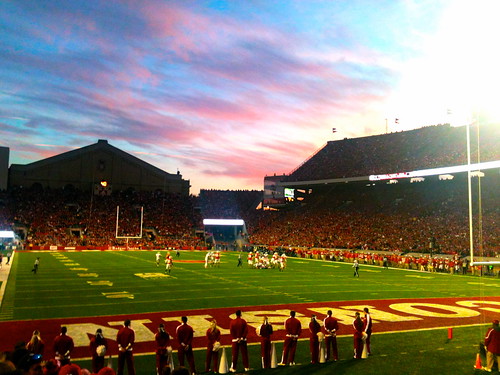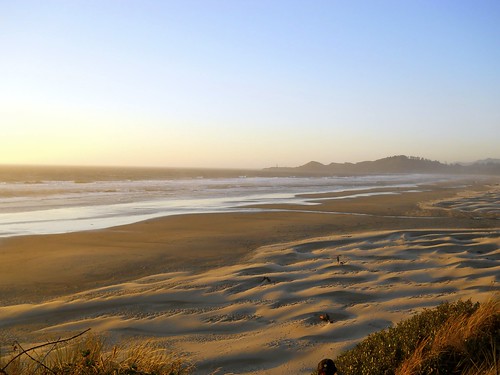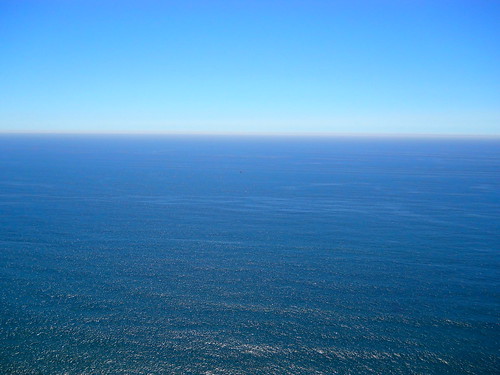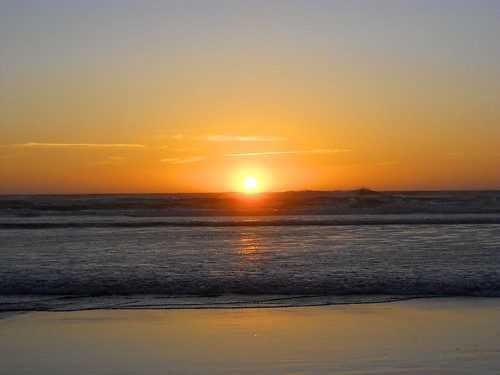And that is all she wrote, folks. My time here in Oregon is up and I have headed back to the Midwest and have started my classes at Purdue. This summer has been a whirlwind of amazing experiences and opportunities that I will never forget. I have had the privelage to learn so much from some stellar biologists.
In my last week I had a perfect blend of desk work and field work. I spent a good chunk of my week consuming massive amounts of coffee and clacking away at my computer trying to put together my end of summer portfolio for Oregon Sea Grant. But I also had the opportunity to go out into the field with Scott one last time to dig up razor clams that would be sent off to be checked for acids that are not safe for human consumption. We check for this regularly in order to keep a close eye on the fishery.
On our way back from the field we passed Adam’s Point where we stopped to look at a dead sea lion that had washed up on shore. I had never been so close to a sea lion before—dead or alive—and I was thrilled to check it out.
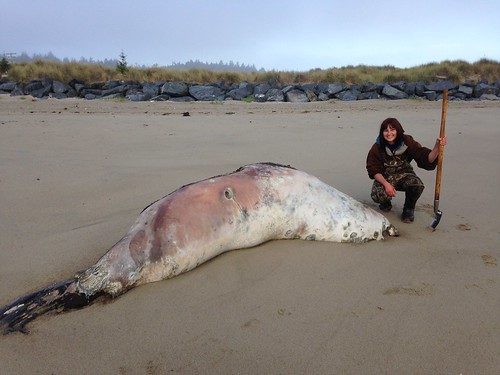
Checking out the dead sea lion that washed up at Adam’s Point.
I also had the chance to go seining with Gary one last time; this time in Bandon on the Coquille River. I now understood my fellow Sea Grant Scholar, Catherine’s, complaints regarding the mosquitos. They were so thick you could see them hang in sheets in the air! The diversity and abundance was lower than in Coos Bay but we did catch a huge male Chinook salmon in our seine which more than made up for it!
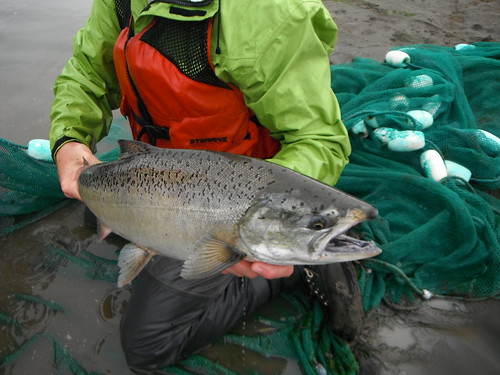
A large male Chinook salmon we seined up in the Coquille River!
On Thursday I had to say farewell to Scott and all the other employees of the ODFW Charleston. Thank you everyone at the ODFW for making this summer so great! I was sad to leave, everyone in the office was so great to work with that I hated having to end my stay there.

One last day at my desk at the ODFW Charleston. Ahh, the clutter of a biologist!
That evening, a close friend of mine from OIMB, Theresa, and I drove up to Eugene for a short visit and then headed to Portland. I had never been to either city so it was awesome to get a look around. Theresa is a U of O student so I was lucky enough to get a full tour of the campus!
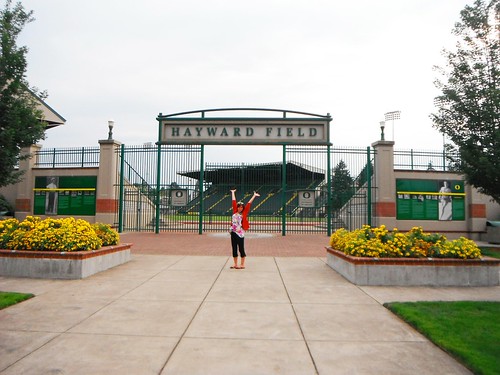
Visiting Hayward Field where they hold the Olympic trials for running events at the University of Oregon in Eugene!
We spent the evening and part of the next day, before my flight, in Portland and of course it was mandatory that we went to Voodoo Doughnuts! The culture in Portland is unlike anything I have ever seen before. The people there are so quirky and friendly and the architecture could hold my attention for hours.

Pit stop at Voodoo Doughnuts in Portland: donuts to die for!!!!
All too soon, Theresa dropped me to PDX and I had to say my final goodbyes to Oregon, a place I’ve come to think of as home. This summer I fell head over heels in love with this state and I know that I have not seen the last of it. Hopefully, I can attend grad school or even work there someday; it’d be a dream come true!
A few days after I had landed in Indiana, I received an email from Steven Rumrill who is the head shellfish biologist for Oregon. In this email he stated that the work Scott, Jim, and I had done would be used to settle some debate ongoing with the management of the Pacific heart cockle fishery in Netarts Bay, OR. I was ecstatic to see that work I had done myself being put to use out in the real world. What an opportunity!!
I would just like to say thank you to Sara Kolesar and Eric Dickey and all others involved with this program at Sea Grant! I would not have had this opportunity without you all. Also, thank you to my mentor, Scott Groth, who took time out of his—to say the least—busy summer schedule and for being an excellent and fun advisor. I learned so much from both Sea Grant and Scott this summer which I will carry with me as I finish up my last year, graduate from Purdue, and enter the workforce as a biologist.
The Sea Gant Summer Scholars program is truly one of a kind and if you are looking for a once-in-a-lifetime experience that will leave you with lasting knowledge about the field of biology, look no further than this program, you will not regret a single moment.
And with that, I sign off. Here’s to the most amazing ten weeks ever. Cheers!
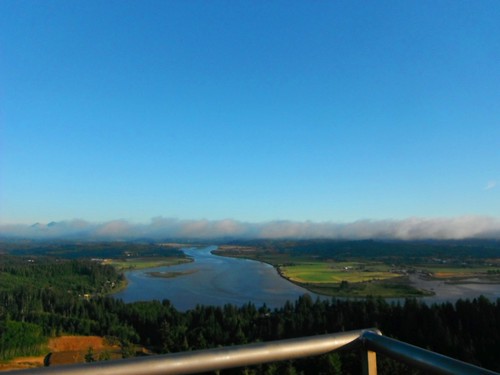
See you soon, Oregon!



